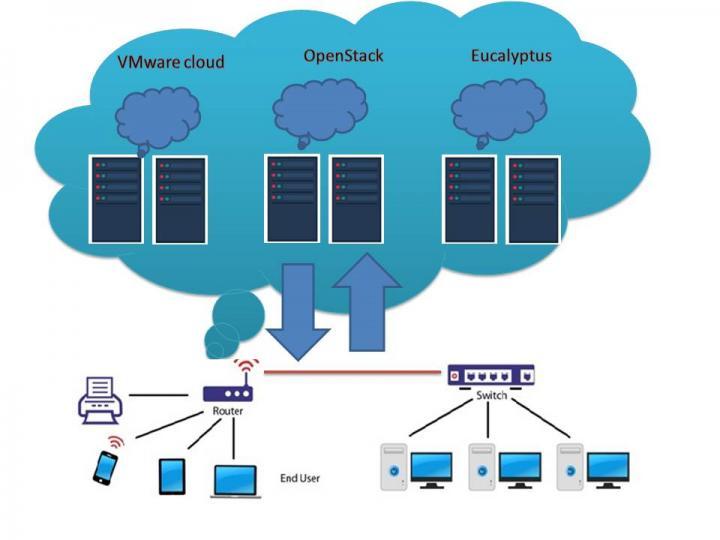Inquire
Demystifying Cloud Computing Algorithms: Powering the Digital Age

Introduction:
Cloud computing algorithms are the hidden engines that drive the efficiency, scalability, and intelligence of cloud-based services. In this blog, we'll explore the world of cloud computing algorithms, how they work, their significance in the digital age, and the role they play in enabling the cloud services we use every day.
What are Cloud Computing Algorithms?
Cloud computing algorithms are a set of mathematical and logical instructions used to manage and optimize various aspects of cloud infrastructure and services. These algorithms make decisions, allocate resources, and automate tasks in the cloud environment.
Key Types of Cloud Computing Algorithms:
1. Load Balancing Algorithms:
-Round Robin: Distributes incoming requests evenly among servers.
-Least Connections: Routes traffic to the server with the fewest active connections.
-Weighted Round Robin: Assigns priorities to servers based on their capacity and health.
2. Resource Allocation Algorithms:
- Dynamic Resource Allocation: Adjusts resource allocation in real-time based on demand.
- Elastic Load Balancing: Scales resources up or down to handle varying workloads.
3. Optimization Algorithms:
- Cost Optimization: Helps reduce cloud costs by optimizing resource usage.
- Time Optimization: Maximizes the efficiency of computing resources to complete tasks faster.
4. Security Algorithms:
- Encryption: Algorithms for encrypting and decrypting data for secure transmission and storage.
- Access Control: Algorithms for managing user access and permissions.
How Cloud Computing Algorithms Work:
1. Load Balancing: Algorithms monitor the performance of servers and distribute incoming requests to optimize server utilization and reduce response times.
2. Resource Allocation: Cloud computing algorithms allocate virtual machines, storage, and network resources dynamically based on workload demands. This ensures efficient resource usage and cost-effectiveness.
3. Optimization: Optimization algorithms analyze historical usage patterns and resource allocation to determine the most cost-efficient and time-effective strategies.
4. Security: Security algorithms play a crucial role in data encryption, access control, and threat detection to protect cloud-based systems and data.
Significance of Cloud Computing Algorithms:
1. Scalability: Algorithms for dynamic resource allocation allow cloud services to scale resources up or down in response to traffic, ensuring uninterrupted service.
2. Cost Efficiency: Optimization algorithms help businesses reduce cloud expenses by eliminating underused resources and avoiding over-provisioning.
3. Reliability: Load balancing algorithms improve service reliability by ensuring even distribution of requests and minimizing server overloads.
4. Security: Security algorithms protect sensitive data, making cloud services more secure and compliant with data protection regulations.
Impact of Cloud Computing Algorithms:
Cloud computing algorithms have a profound impact on various industries and areas of technology:
1. Business Efficiency: Cloud computing algorithms enable organizations to focus on core business operations by automating resource management and optimization.
2. Innovation: Algorithms facilitate the development of new technologies, such as AI and machine learning, by providing the computational resources required for training and inference.
3. Remote Work: Algorithms have become essential in supporting remote work by ensuring the availability and reliability of cloud-based collaboration tools and services.
4. Cost Savings: Optimization algorithms help businesses minimize their cloud expenses, leading to significant cost savings.

Cloud computing algorithms are the unsung heroes behind the seamless, efficient, and intelligent cloud services we rely on daily. Their role in managing resources, optimizing costs, and enhancing security is pivotal in the digital age. As we continue to embrace the cloud for data storage, application deployment, and innovation, cloud computing algorithms will play an increasingly central role in shaping the way we live, work, and interact with technology.

- Managerial Effectiveness!
- Future and Predictions
- Motivatinal / Inspiring
- Other
- Entrepreneurship
- Mentoring & Guidance
- Marketing
- Networking
- HR & Recruiting
- Literature
- Shopping
- Career Management & Advancement


 SkillClick
SkillClick